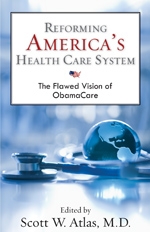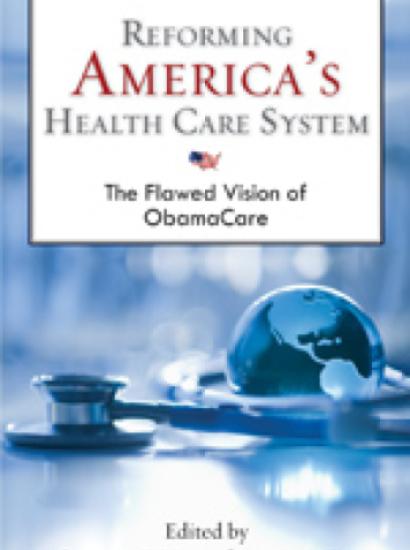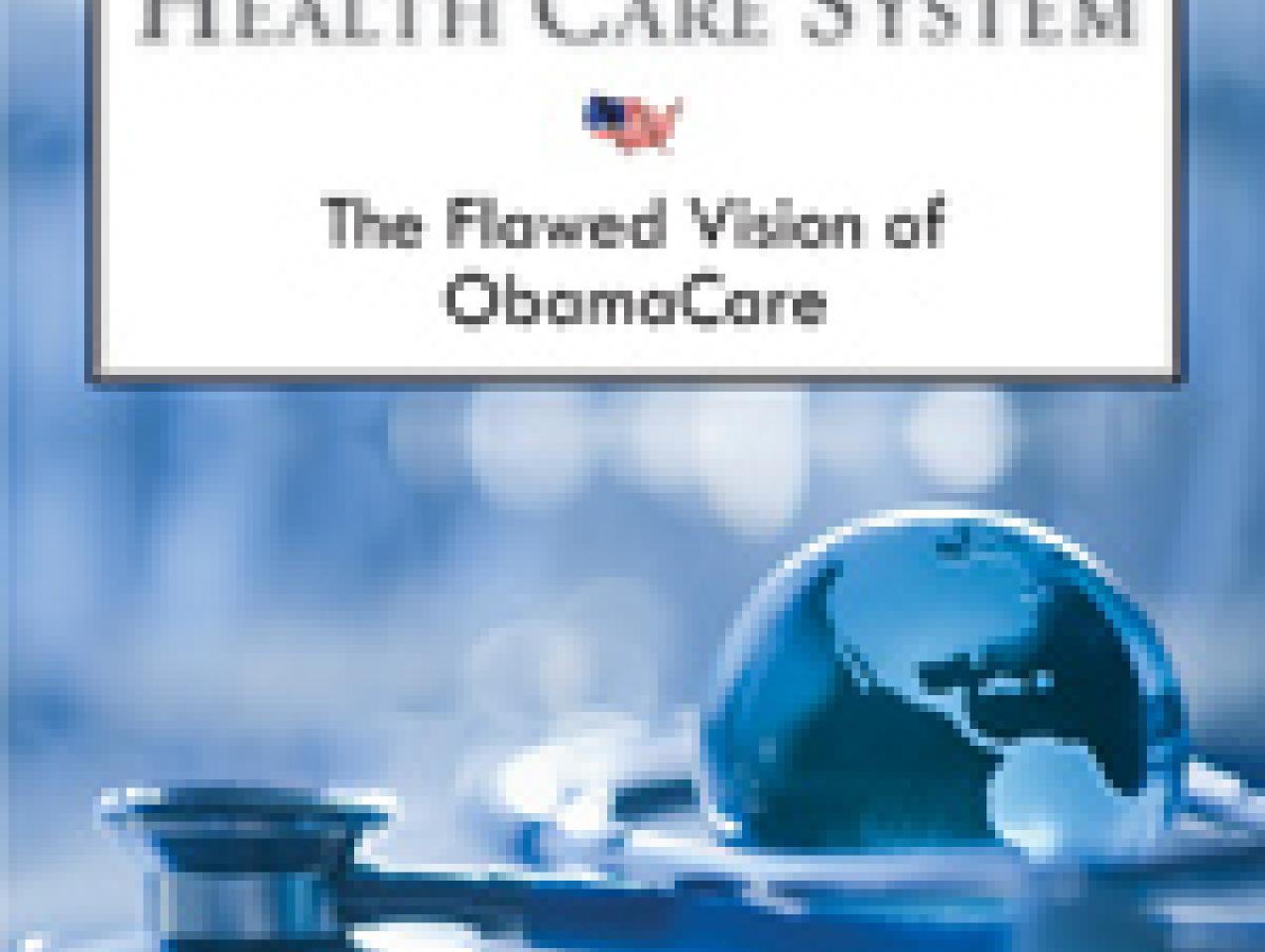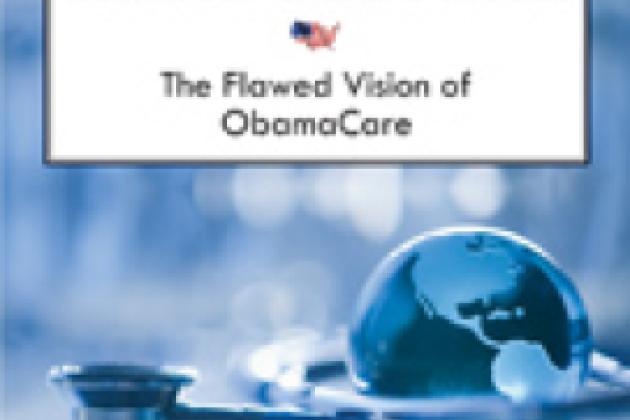- Health Care
This article is the second in a two part series exploring the ignored facts and disregarded options in American health care reform. The essay below examines the disregarded options. For the article about the ignored facts, click here.
Regardless of the amazing quality of medical care that has evolved over the past half century and even acknowledging that the U.S. health care system compares favorably to those in other developed countries, there is a broad consensus on a number of significant problems in American health care.
It is inarguable that costs are high and increasing. It is also clear that government and society cannot continue to spend such huge sums of money and large proportion of GDP on healthcare. The lack of portability of health insurance in the American system, which largely relies on employers for insurance, needs to be changed. The fact that millions of Americans are uninsured must be addressed. The Democrat Congress of last year and the Obama administration claimed that a major principle underlying their health reform law was the goal of increasing competition among health insurance providers. Increasing competition would seem to be a fundamental means of reducing cost, but to the contrary the new legislation will only centralize power to the government.

Hoover Press
The health legislation passed by the Congress and the Obama administration creates massive new government authority that controls access to medical care and dictates costly insurance benefits. Rather than increasing private sector competition, the legislation will reduce choice, shift more regulatory power to bureaucrats, hinder innovation, and ultimately be likely to serve as a rationale for shifting Americans to public plans that restrict access to care.
The overall goal of any health reform plan should be to increase the opportunity for good health for Americans and their families. Key principles include reducing the number of uninsured, facilitating access to affordable health insurance, making health insurance more portable, and promoting innovation in health care, so that the excellence of American health care is not sacrificed, and individuals and their families are empowered to decide how best to spend their money in health care decisions.
Here are six straightforward steps the government could take, right now, that would increase the competitiveness in the health insurance markets and empower consumers so costs come down by value-based purchasing rather than government edict. These reforms will reduce the number of uninsured, facilitate access to affordable insurance, make health insurance portable, and promote innovation in health care.
Here are six market-based reforms that would increase competitiveness in the health insurance markets, empower consumers, and reduce costs.
A first step to increasing competitiveness in the health insurance market is to allow cross-state purchasing, so that people can shop at competitive prices in a national market for the insurance they actually want to buy. It is ill-conceived, unnecessary, and self-defeating to the goal of encouraging competition that Americans are forced to restrict their purchases to in-state goods or services. Government can rapidly lower the price of health insurance through the private insurance market by breaking down these anti-competitive barriers that result in shocking variations on the order of several multiples among states in prices for equivalent health coverage.
One specific and immediate action would be to allow small businesses to band together in trade associations to purchase coverage for their employees. If regulated by the Employee Retirement Income Security Act of 1974 (ERISA), they would be exempt from state health insurance mandates and regulations. Just like large businesses, America’s small businesses need this capacity now, so their employees can save money by getting the coverage they actually want instead of bloated plans they don’t desire. Since small business employees make up the biggest proportion of uninsured workers, this one change would have high impact.
Second, government can force transparency on the system, ensuring that Americans have a clear understanding of the price and quality of their doctors and hospitals, as well as enough information about health and diseases to make informed, value-conscious decisions. Let’s leave the experts—medical scientists in their peer-reviewed literature—to determine efficacy and clinical utility.
A far more important role of the government needs to be explored: to make transparent the pricing of medical procedures. Public knowledge of price will provide an important impetus toward competitive pricing by both physicians and hospitals. In our current system, few patients are aware of the charges about to be incurred for their medical care. Generally, they have no reason to ask because the current third-party-payer structure makes patients believe that "someone else is paying."
The lack of patient demand for price information has allowed hospitals and doctors to cloak their price structure in a shroud of mystery and avoid public view. A powerful role of the government could be to require posting of prices for medical procedures and services, as well as qualifications of doctors. Information is power, and price visibility is essential to induce competition.
Third, it is time to reduce the mandate-created distortions of health insurance markets. State-based mandates alone now number over 2,100 and are a scandalous abuse of government dictates. They increase insurance costs by 20 to 50 percent, and force Americans to buy policies covering massage therapy, acupuncture, chiropractors, in vitro fertilization, wigs, and other services not necessarily wanted by more than a small minority of American families.
Instead of adding mandates to purchase insurance that Americans rationally do not consider a good value, the government should instead focus on creating an environment where insurance products can become attractive to consumers. Governments can put a halt to the unending stream of expensive coverage mandates advocated by special interest groups and intrusive big government supporters and start stripping back on these costly and ill-advised regulations.
The fact is that the problems with our system today are to a great extent caused by decades of failed and costly government mandates, and the huge burden of government intrusion into our health care decisions. For a president and a party who voice concern about the right to privacy, it seems paradoxical to push government into such personal decisions as medical care. How about letting patients themselves decide what sort of coverage and benefits they want for their families by watching what they actually purchase, rather than defining appropriate coverage as if they were naive children or simply incompetent?
Fourth, it’s sensible to expand consumer choice by increasing instead of restricting the availability of insurance and simplifying rather than complicating the rules and regulations of lower-cost health plans, like high deductible plans for catastrophic coverage with health savings accounts. This will make insurance an attractive purchase—a good value—for the millions of Americans who can afford insurance but currently (and arguably wisely) choose to forego buying something they consider a poor value for their money.
HSAs increase choice for consumers, expand individual ownership and control over health spending, promote price visibility to allow value-based purchasing, and provide incentives for savings to prepare for future health care needs. Congress should permit more flexibility in employer contributions to "disease management accounts" in lieu of traditional third-party benefits, support tax reform proposals to allow parents’ HSA balances to transfer to their children’s HSAs tax-free, and allow holders of HSA plans who relocate because of a job change to purchase health insurance across state lines without being subject to state mandates.
Fifth, government can empower the consumer, instead of itself, by revamping the tax treatment of health care expenses, so that all Americans will truly shop for and ultimately own their health insurance. A number of creative reforms have gone ignored by those more interested in empowering government rather than American families with control of the money. For instance, a national system of refundable health care tax credits—actual cash even for those who pay no income tax—would foster personal ownership and control of health plans and increase the market competition that the administration claims it seeks to advance.
Countries with government-run health care have failed to control escalating costs.
The essential portability of insurance—truly owned and designed by American consumers—eliminates the fear of job loss and exposure to financial disaster by loss of coverage and creates a huge new group of value-seeking shoppers for insurance. Instead of expanding dependence on the already unsustainable government health plans of Medicare and Medicaid and then reducing payments that restrict medical care, vouchers can partly or even eventually totally replace those systems, creating a massive new market of Americans shopping for personally valued insurance from a responsive private sector. Innovation comes from the private sector, not government, and there is no reason the health insurance industry would be an exception if the appropriate incentives and opportunities were put in place.
Moreover, the illusion that private insurers are evil and government insurance is somehow more benevolent is exposed by facts showing that Medicare has the highest rate of claim denials, 6.85 percent, compared with all seven private insurance companies. And Medicaid patients are already not even accepted by almost half of doctors in American metropolitan areas. Pushing more people into government insurance that is not accepted does nothing to gain access to medical care.
Empowerment means having control of the health care dollar, and with it, decision-making authority over medical care and doctor selection, insurance coverage people want rather than are forced to pay for, and coverage that is affordable and portable. This single policy change would reduce health expenditures on the order of hundreds of billions of dollars, while simultaneously eliminating the crippling burden of health costs on American businesses created by historical accident rather than thoughtful intention.
Sixth, Congress can finally have the courage to push back against the trial lawyers and fix the medical liability system. Even acknowledging the important goals of ensuring quality and protecting patients’ rights, the medical-liability legal system imposes a tremendous financial burden on the health care system in the United States, estimated by some at over 80 billion dollars per year. Doctors and hospitals not only pass on the direct costs of increased malpractice premiums, but provide more expensive and relatively unproductive medical treatments out of fear of litigation. Estimates are that the additional cost of defensive medicine can amount to tens of billions of dollars per year, up to 6 percent of total costs.
A significant rethinking of the entire legal relationship between patient and care provider needs to be considered. Even in advance of that, research by academics and government agencies is clear: common sense reforms to the medical liability system, like reasonable caps on non-economic damages and giving patients and providers more freedom to experiment with alternatives to traditional courts for resolving disputes, can compensate victims more quickly, reduce costs, and enhance incentives for doctors and hospitals to take more appropriate precautions against medical errors.
***
Evidence shows that countries with heavy-handed government-run health care have failed to control escalating costs. Even welfare-burdened nations like Sweden are introducing privatization as part of their solution in grappling with the economic challenges of health care.
Consider that 80 percent of Americans say that access to the most advanced tests, drugs, and medical procedures and equipment is "very important" or "absolutely essential" yet our government’s economic advisors stress limiting their use. And why is it that those government officials leading the charge toward nationalized health care immediately wield all their influence to seek out America’s leading physicians and the most sophisticated diagnostic tests and novel therapies behind closed doors, when they or their families need care? Ironically, they themselves should be particularly worried, because ultimately we risk an inevitable degradation of physician quality, owing to the impending price (and therefore wage) controls for health care providers and hospitals.
Does anyone really believe that the best and brightest will continue to pursue a profession requiring years of rigorous training and sacrifice when in the end government fixes wages and bureaucrats dictate decisions? And does anyone really think that the federal government will not eventually try to force doctors to accept new low prices by threatening approval of medical licensure based on acceptance of those prices, a shift of authority to big brother government that is already proposed in Massachusetts?
Now is the time for all who value control of their own health decisions, access to highly trained sub-specialty doctors of their own choosing, continued advances in new diagnostic methods, and safer, more effective treatments to recognize what they are about to lose. We need creative and bold leadership to stop the inexorable slide to nationalization of health care that has been proven world-wide to reduce choice, restrict access, and harm patient outcomes.
The shift of power from patients and their doctors to government bureaucrats under the guise of reducing costs may be the greatest Trojan horse in American history. If allowed to stand, this would mark the end of health care as we know it.
















